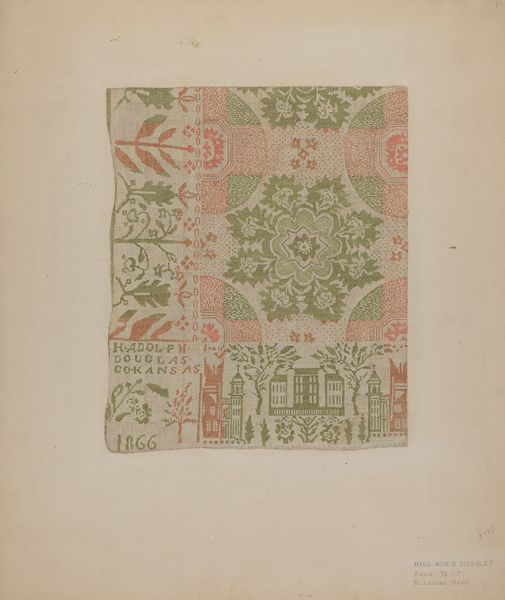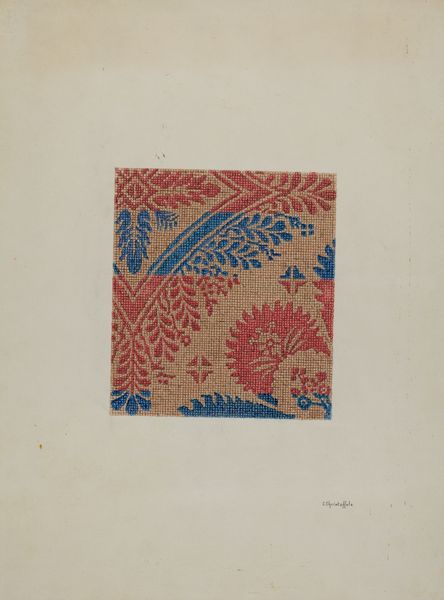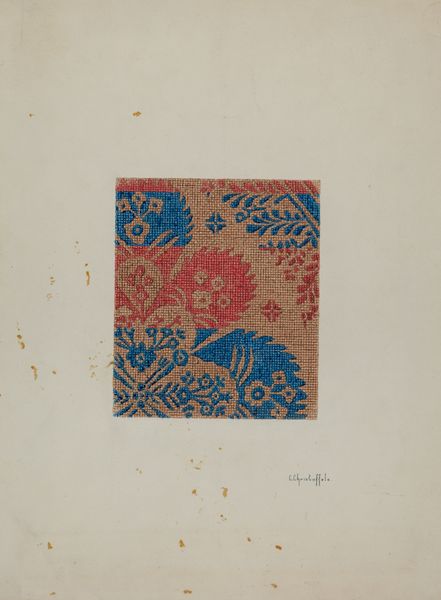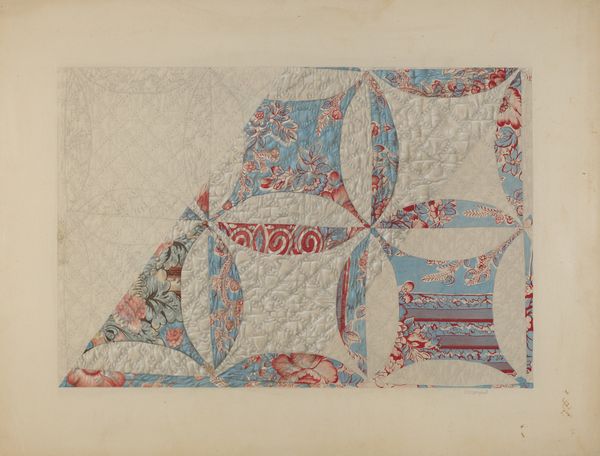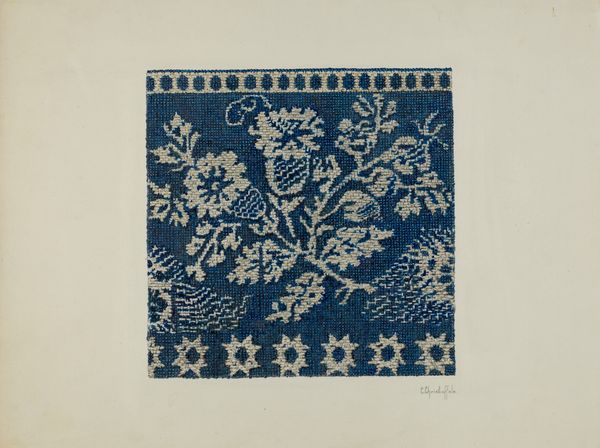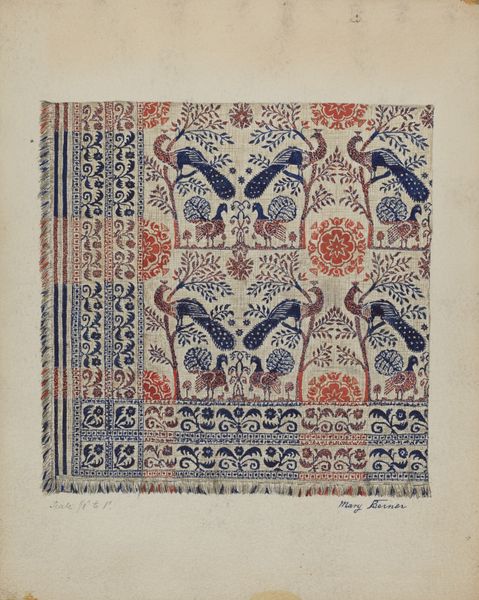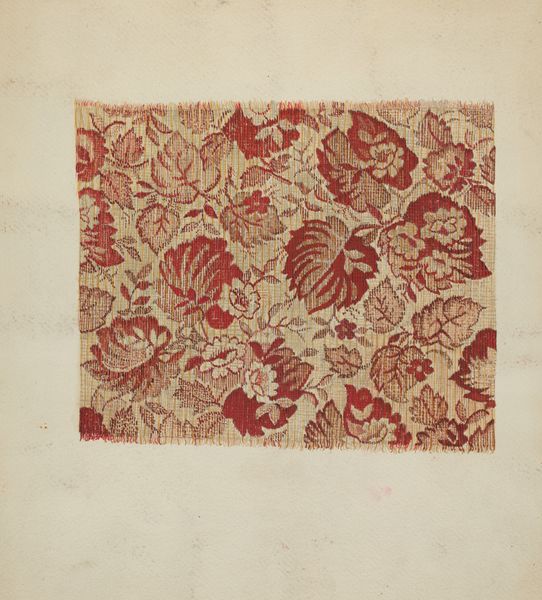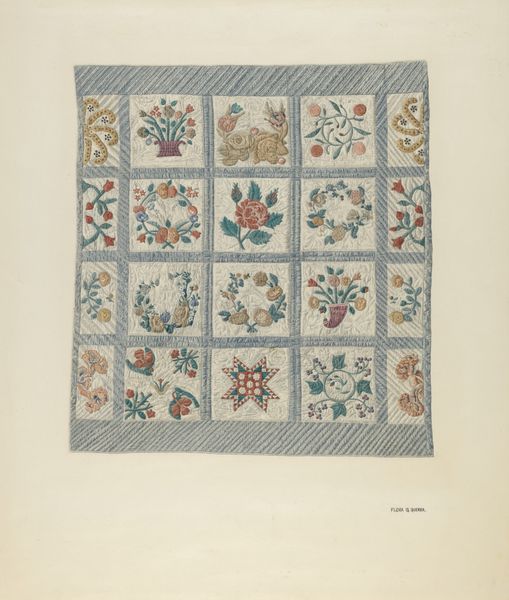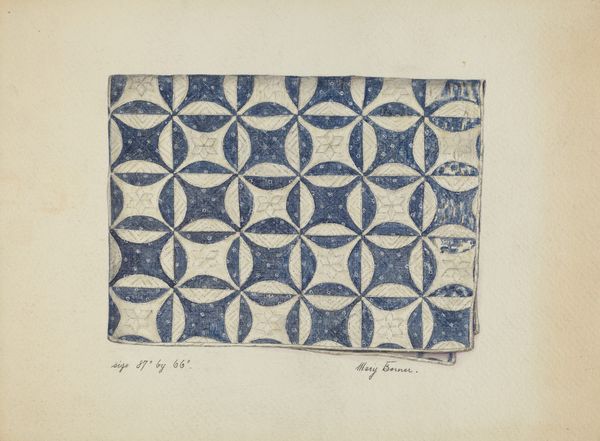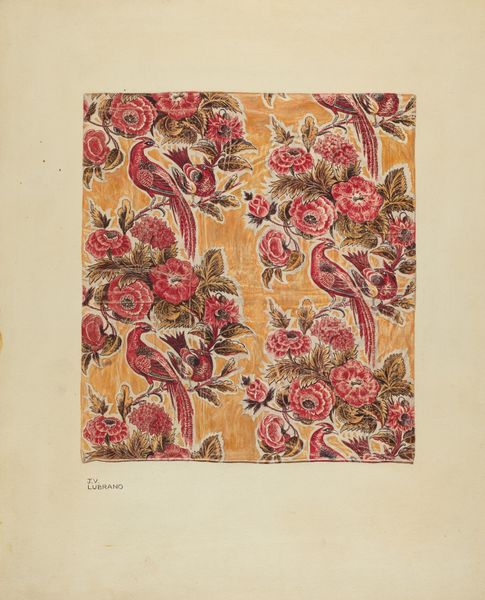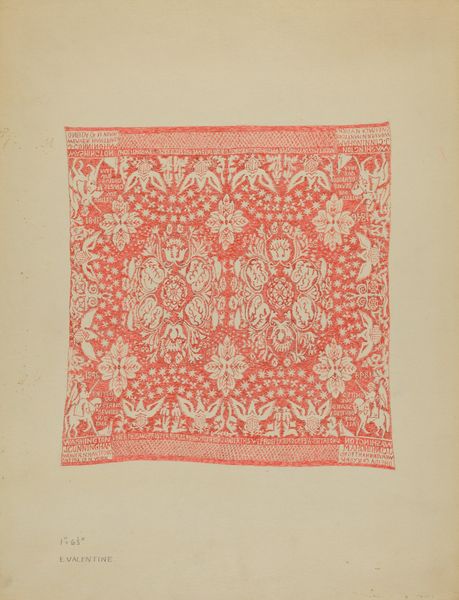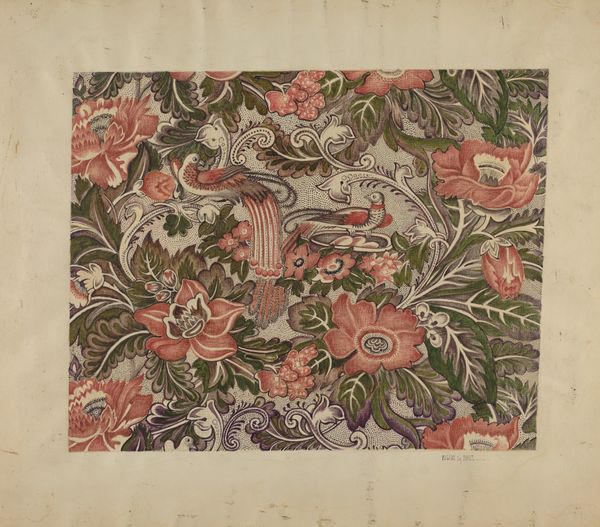
#
folk-art
#
folk-art
#
geometric
#
decorative-art
#
mixed medium
#
mixed media
#
watercolor
Dimensions: overall: 47.7 x 52.9 cm (18 3/4 x 20 13/16 in.)
Copyright: National Gallery of Art: CC0 1.0
Curator: Welcome. Let's consider this mixed-media piece, which includes drawing and watercolor, entitled "Woven Coverlet" created by Alois E. Ulrich sometime between 1935 and 1942. It seems to be a rendering of folk art. Editor: Immediately striking! The composition is almost quilt-like in its structure, broken into neat squares. The colors are muted, giving it a wonderfully vintage, homespun feel. Curator: Ulrich was deeply involved in documenting and preserving various forms of vernacular art. The coverlet becomes a site for understanding community identity, craft traditions and personal narratives expressed through these reproduced patterns. Editor: The visual vocabulary employed, such as floral motifs and geometric forms, works to give a comforting sense of balance. Each square seems to operate as a microcosm. Look at the variety, there's a house depicted on the bottom right corner. Curator: The depiction of the house provides a window into the values and aspirations of the people who crafted and cherished such items. They evoke notions of domesticity, stability and connection to the land. It connects directly with the decorative arts movement by illustrating design elements considered for practical, household purposes. Editor: Exactly, the repeated patterns and the border design lend themselves perfectly to a repeated motif, so that they work well on a functional item. It's all so carefully and intentionally constructed, each element working in harmony. Curator: By meticulously recording such examples, Ulrich offers valuable insights into the social, cultural, and economic dimensions of American life during the period, revealing the artistry inherent in everyday objects and the significance they held for their creators and users. Editor: Yes, it's that perfect blend of visual delight and intellectual rigor. It demonstrates how our understanding of materials and compositional form can shape cultural objects. It's something you might expect to find hanging in someone's home, as a proud emblem. Curator: Indeed. By appreciating both the artwork's surface and its historical significance, we gain a fuller perspective of the communities that produced it and how our perception of folk-art design evolved. Editor: Absolutely. It provides a valuable way to discuss form and function working together and that creates such harmony for the senses.
Comments
No comments
Be the first to comment and join the conversation on the ultimate creative platform.
